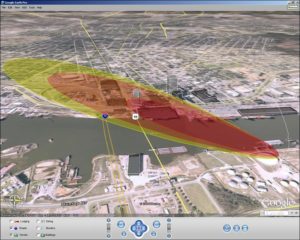Navigating Geospatial Intelligence: Key Drivers and IT Opportunities
As the demand for trustworthy visual data collection and advanced technologies to support strategic decision-making continues to rise, geospatial intelligence plays a vital role in delivering essential military and environmental insights to the intelligence community. Recently at the GEOINT Conference in St. Louis, leaders from several intelligence agencies shed light on the future of geospatial intelligence (GEOINT) and its relationship with emerging technologies.
Using GIS for Investigating and Mapping Crime
A new book by Gregory Elmes, professor of geography at West Virginia University – “Forensic GIS: The Role of Geospatial Technologies for Investigating Crime and Providing Evidence” examines the use of location technology in preventing and fighting crime and convicting offenders.
CAD & GIS News for Govies 11/20
CAD News for Govies is a weekly feature on Acronym that scans thousands of industry articles to present you with a regular source of CAD and GIS news, information and ideas that impact the public sector. Here’s the latest round-up:
Is it Possible To Design Buildings That Can Withstand 250 MPH Typhoon Winds?
CAD & GIS News for Govies 10/16
CAD News for Govies is a weekly feature on Acronym that scans thousands of industry articles to present you with a regular source of CAD and GIS news, information and ideas that impact the public sector.

Here’s the latest round-up:
New Construction Management Software Designed Around iPhone Usability
How Government Agencies are Using LiDAR to Cut Costs Across Hundreds of Use Cases
Technically News – 3/4
Autodesk University 2012 Recap
Autodesk University (AU) 2012 is over and it ended as one of the most comprehensive and exciting conferences in AU history. Missed it?Don’t fret; we’re here to fill you in.
